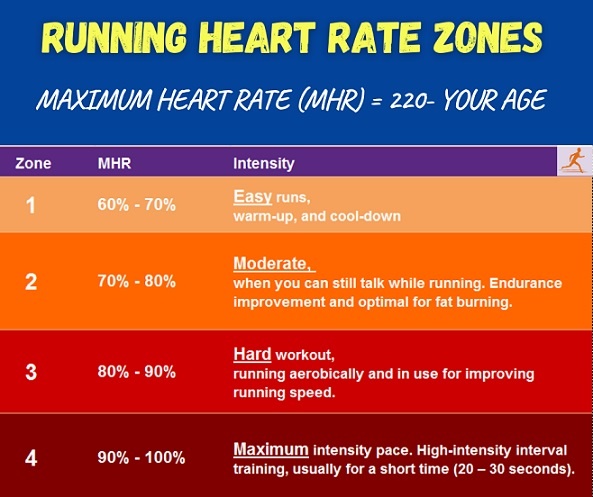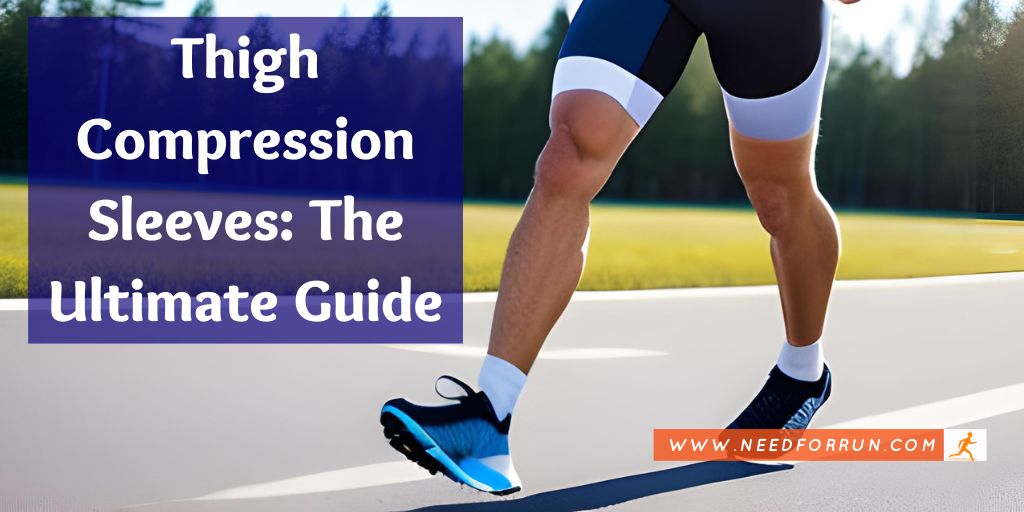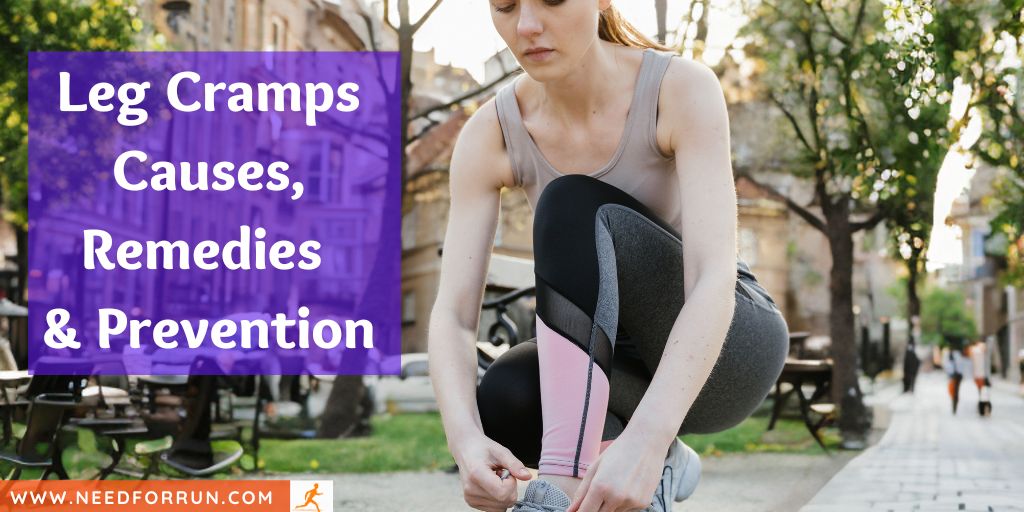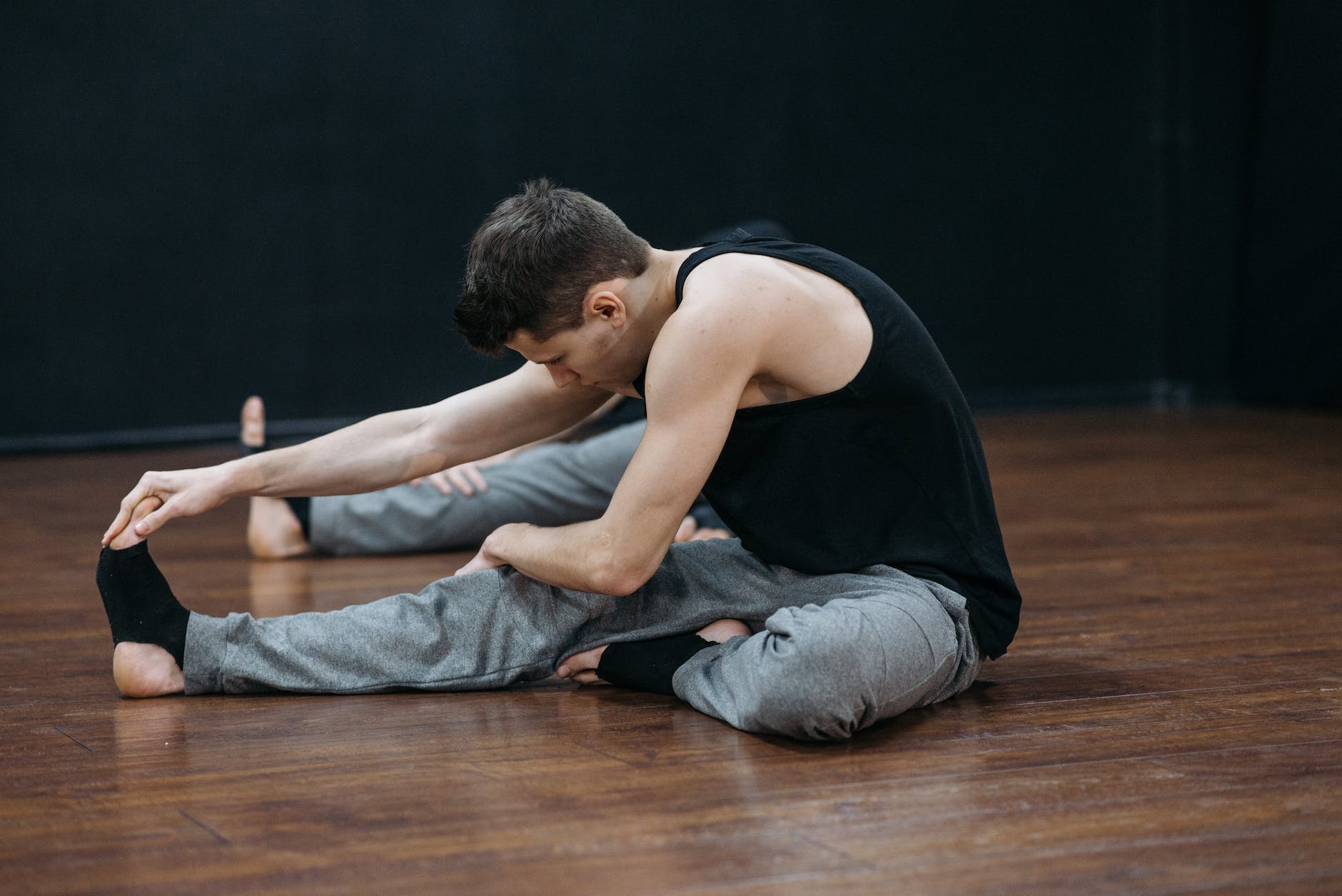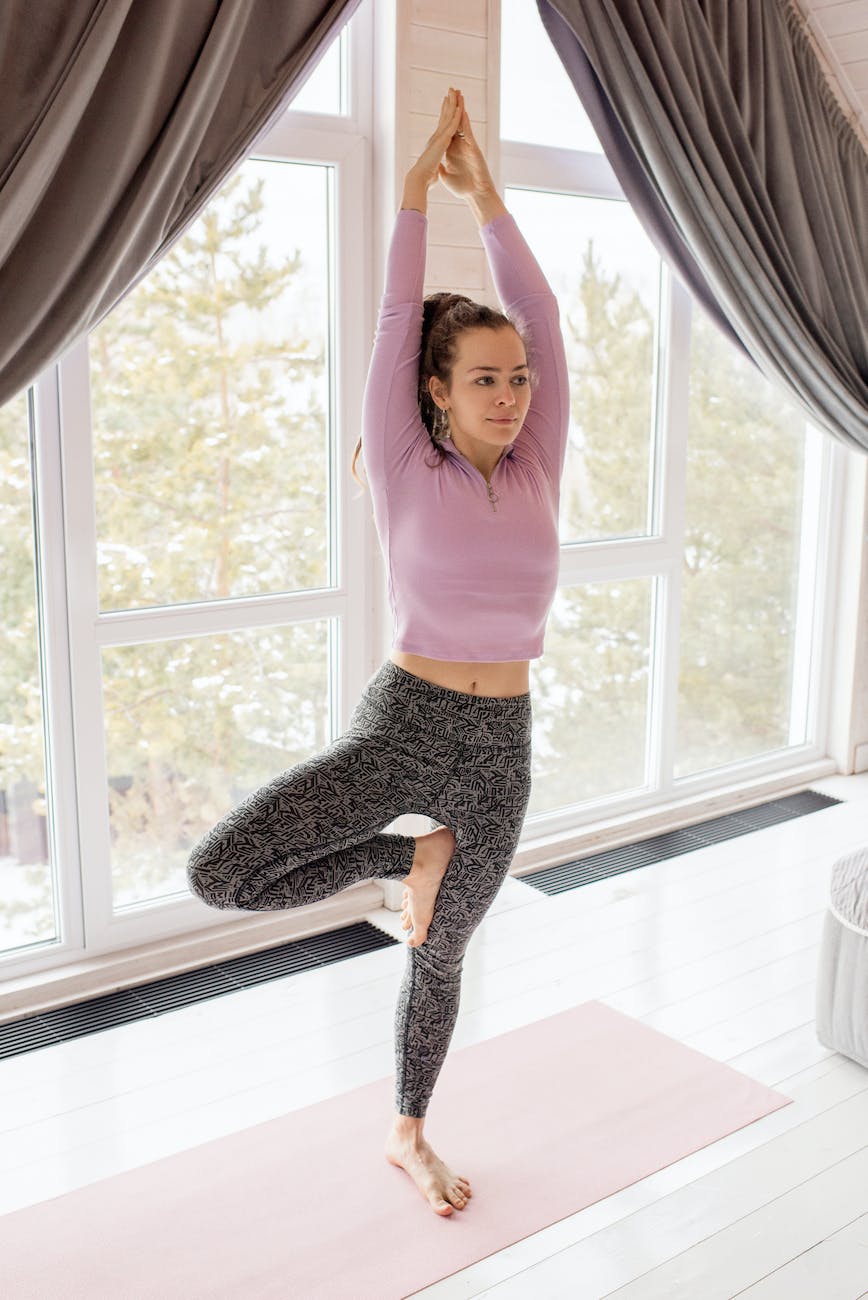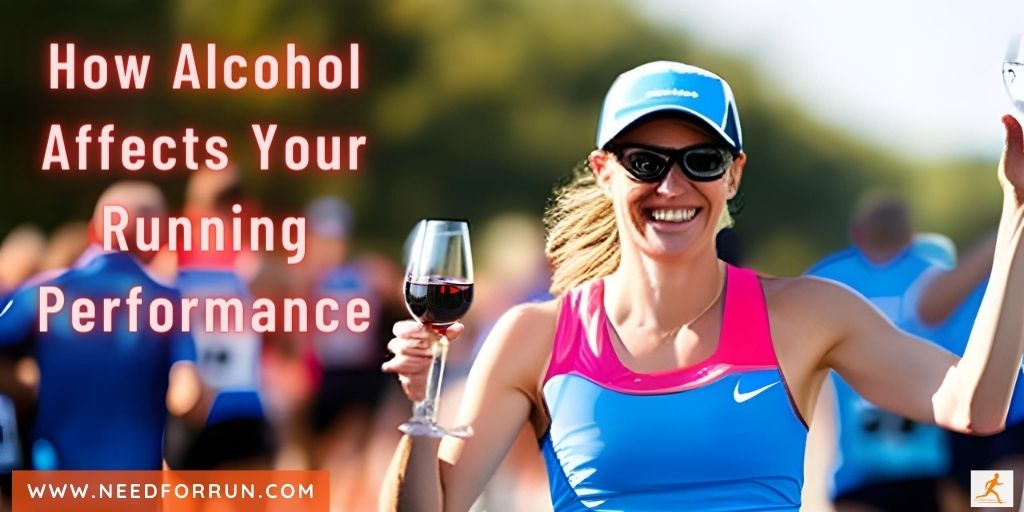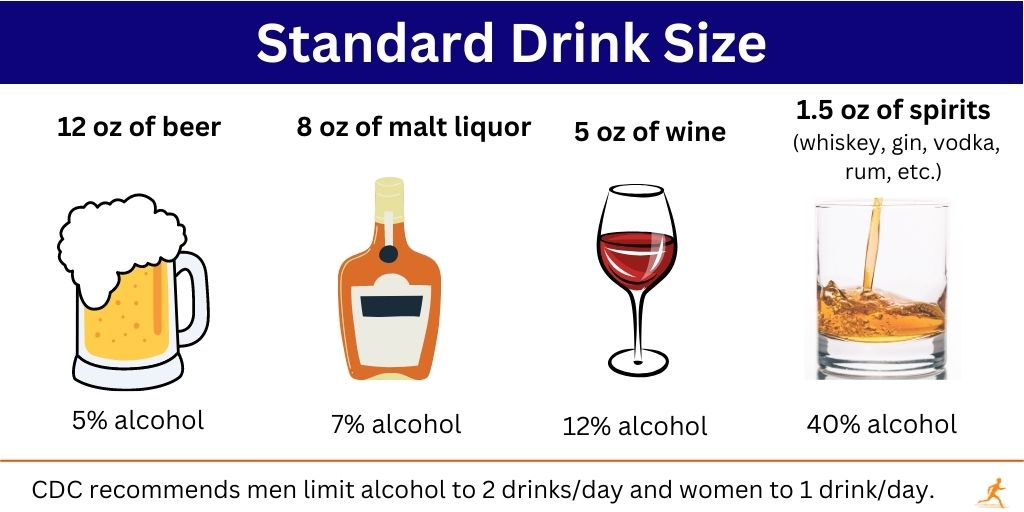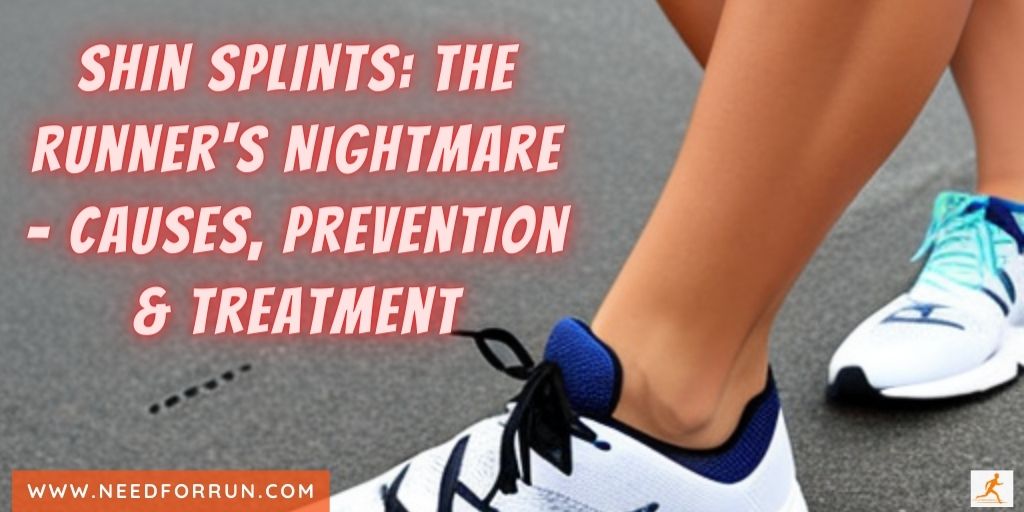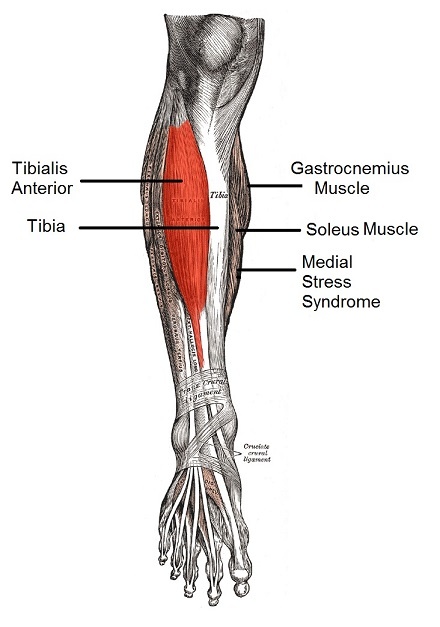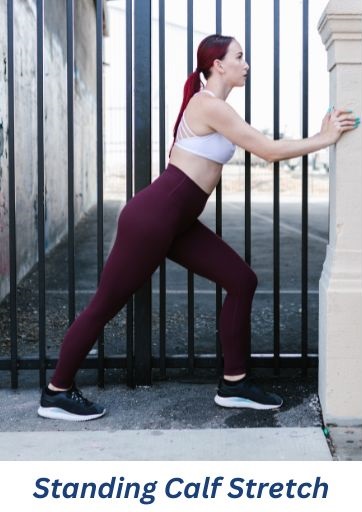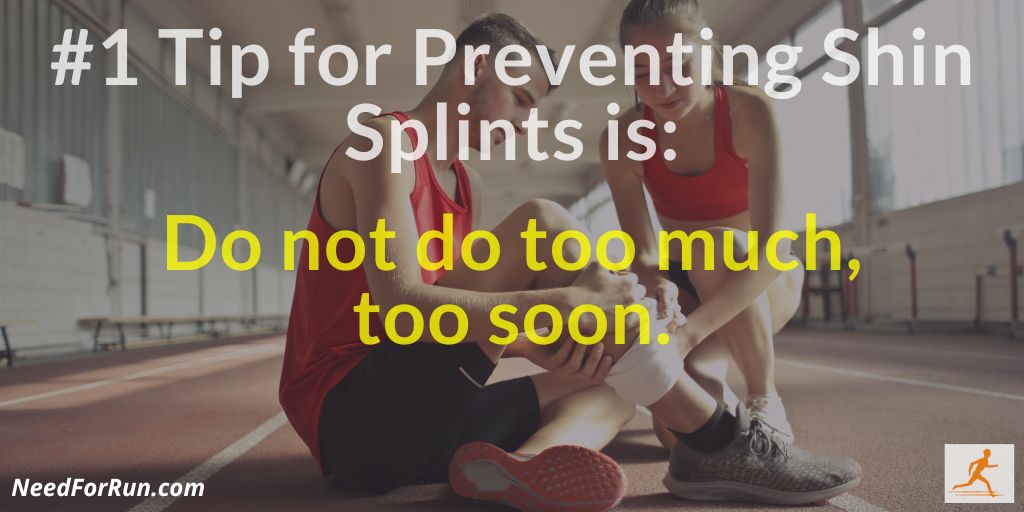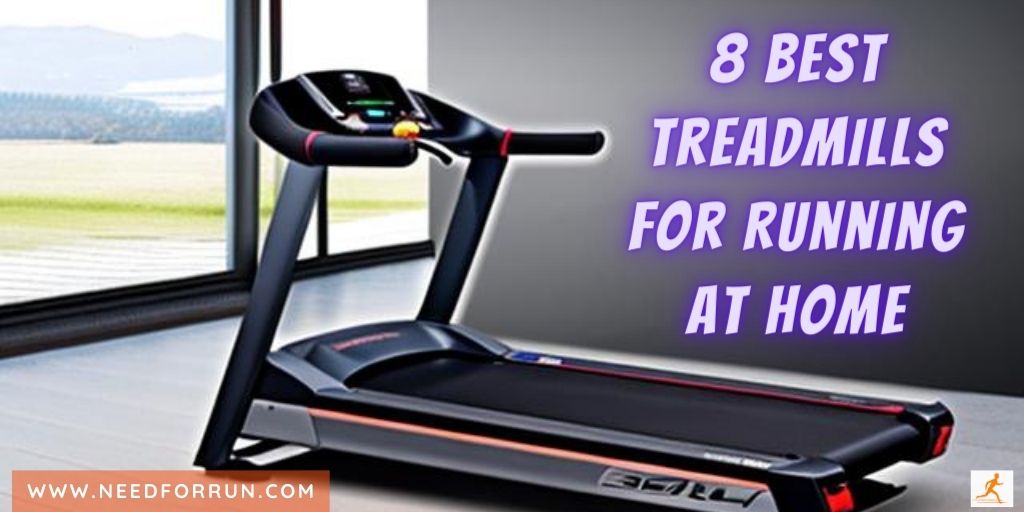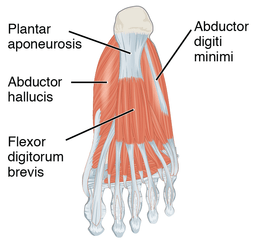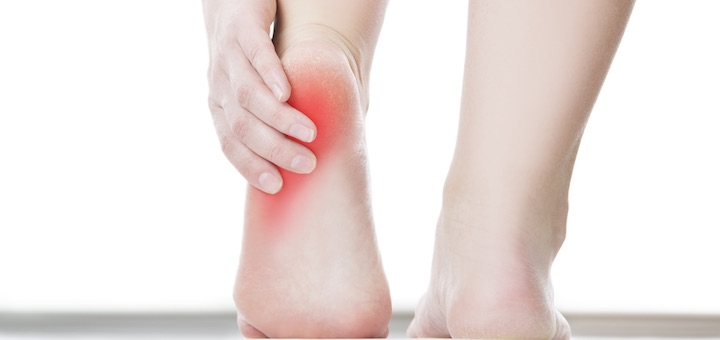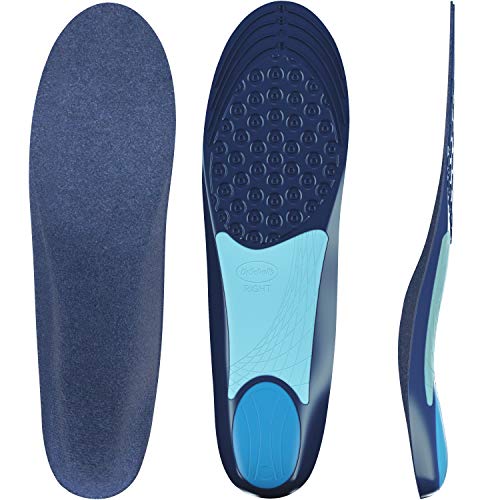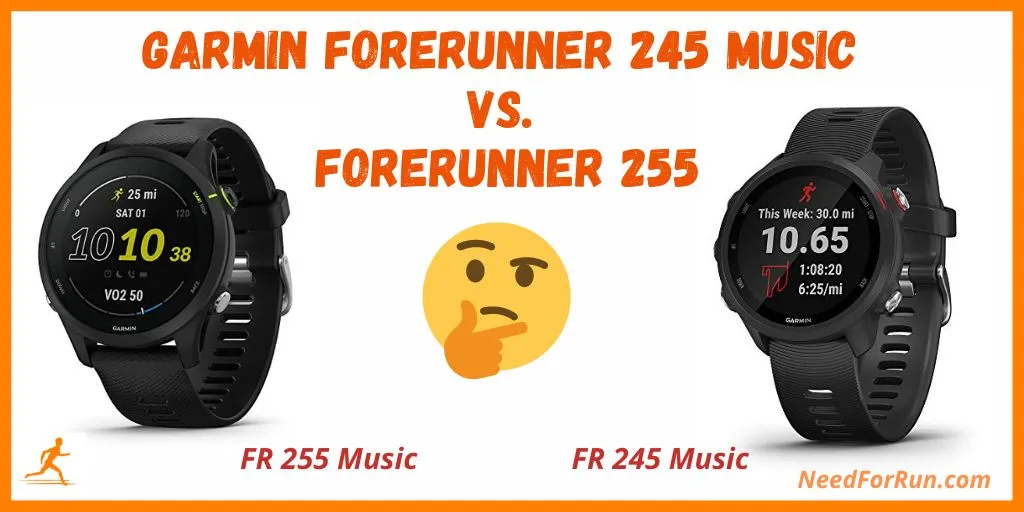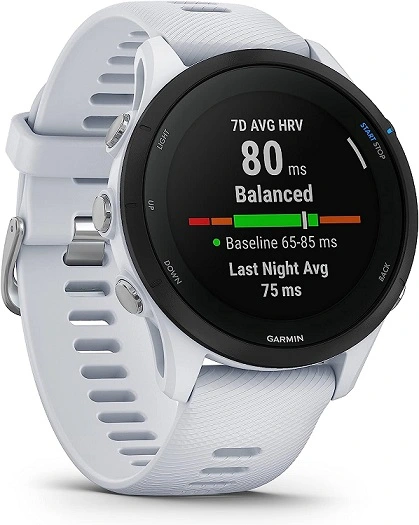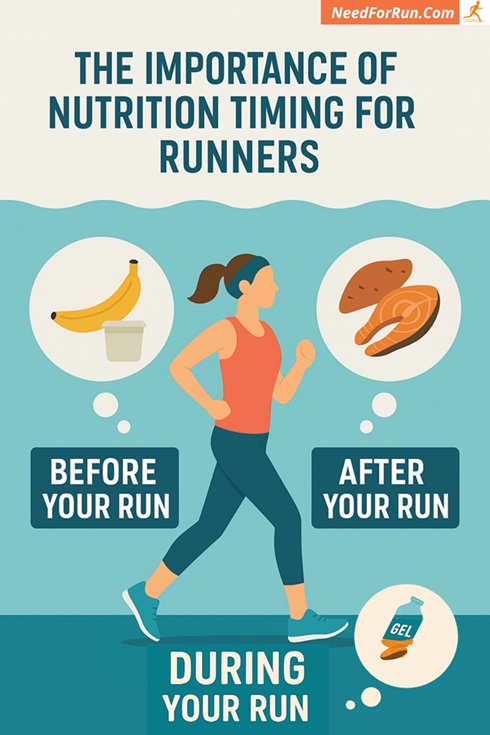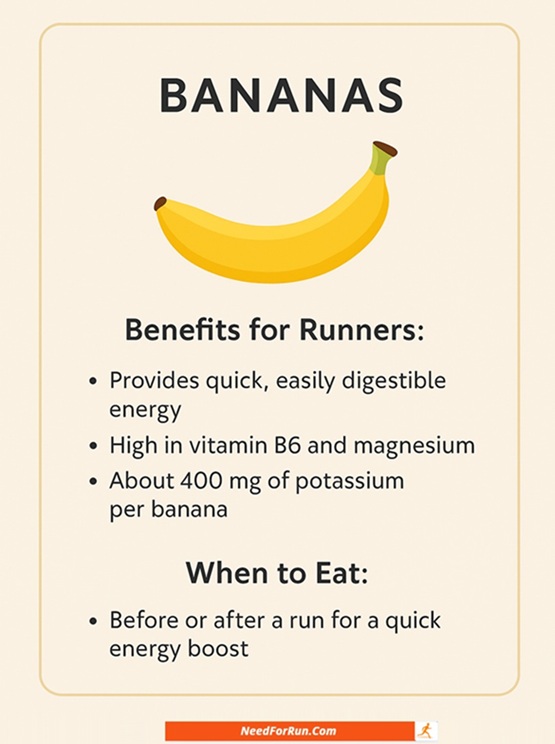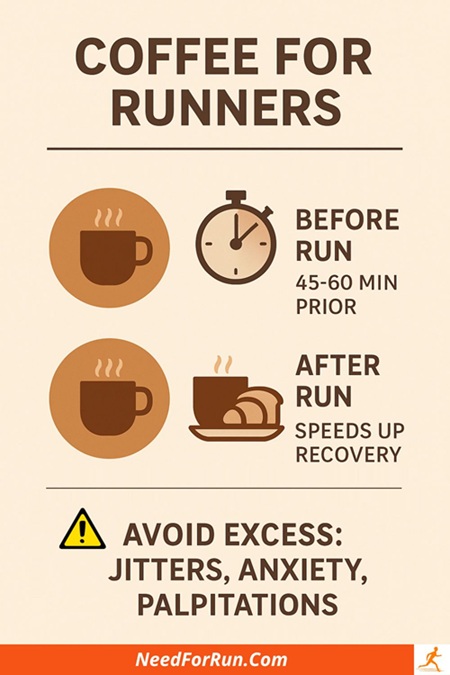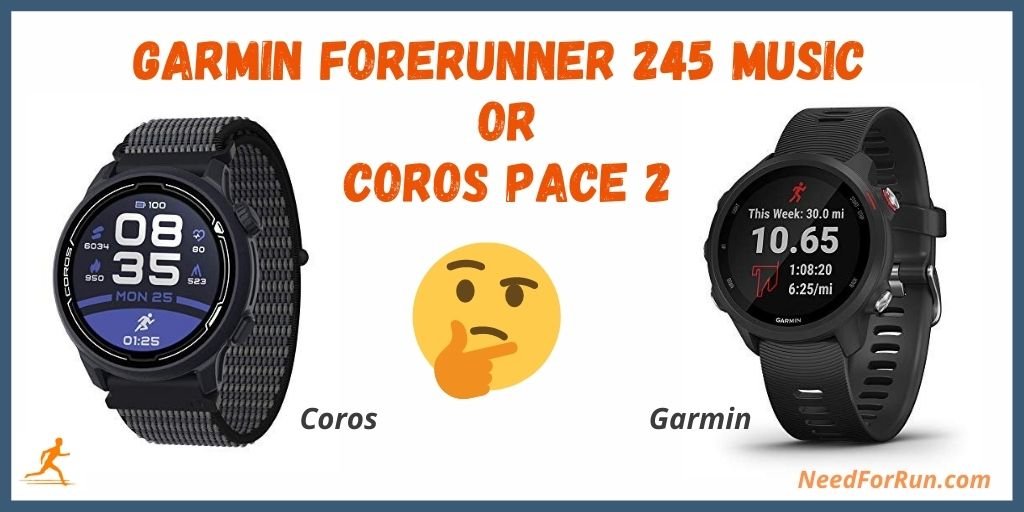
Welcome to The Ultimate Runner’s Glossary — your go-to guide for understanding key running terms and definitions. Whether you’re a seasoned marathoner, a casual jogger, or just starting your running journey, this glossary helps you make sense of the language of running.
From everyday concepts like cool down and interval training to advanced topics such as gait analysis and Kenyan hills, you’ll find clear explanations to boost both your knowledge and performance.
Dive in and explore the essential terms that every runner should know — and keep checking back as we continue to add more useful running definitions over time.
A
Aerobic Capacity
Aerobic capacity, also called cardiorespiratory endurance, is the body’s ability to take in, move, and utilize oxygen during extended physical activity. Those with a high aerobic capacity can sustain high-intensity exercises for longer periods, which is critical for distance running.
Anaerobic Threshold
The anaerobic threshold (AT) is the point during intense exercise where the body’s demand for oxygen exceeds the available supply. At this point, the body relies more on anaerobic metabolism to produce energy, accumulating lactate in the muscles. Understanding and training at or near the anaerobic threshold is essential for improving race performance and endurance.
Aqua Jogging
Aqua jogging is a form of exercise performed in a swimming pool. It involves imitating the running movements while submerged in water, using flotation devices to stay upright. Aqua jogging is a great option for runners recovering from injuries or seeking a low-impact workout.
The water’s buoyancy reduces stress on joints and muscles. It allows runners to mimic running motions such as high knees, leg kicks, and arm movements. The water adds resistance, making the workout more challenging and helping to build strength. Aqua jogging can be used as a supplementary training method during intense periods of training or to add variety to activities. It is a versatile and beneficial exercise that allows runners to continue training even if they can’t run on solid ground. Whether for injury recovery or fitness maintenance, aqua jogging offers a refreshing and enjoyable way to stay active.
B
Barefoot Running
Barefoot running is an innovative technique where runners choose to run without traditional shoes, either barefoot or with minimal footwear. Proponents believe that this approach promotes a more natural and efficient running form while strengthening the foot and lower leg muscles. The freedom of movement and flexibility of the feet in barefoot running may also improve balance and proprioception. However, it is crucial to transition gradually and carefully to avoid injuries. Beginning with short distances on soft surfaces and gradually increasing mileage can help prevent issues like stress fractures or plantar fasciitis. It is recommended to seek guidance from a healthcare professional or running coach with experience in barefoot running before attempting it, as they can provide personalized advice based on individual fitness levels and goals.
Base Mileage
Before starting a specific training plan or speed workouts, it’s essential to establish your base mileage. This running term refers to the average miles (or kilometers) you run per week at a moderate pace to build your aerobic fitness and endurance. Base mileage is crucial for preventing injuries and providing a solid foundation for more intense training in the future.
Black Toenails
Black toenails, also known as “runner’s toenails,” is a common running injury characterized by discoloration and bruising under the toenail. It occurs when repetitive impact or pressure from the shoe causes blood vessels to rupture, leading to bleeding beneath the nail. As blood accumulates, the toenail may turn dark or black.
Black toenails can be painful and may eventually lead to the nail detaching from the nail bed.
To prevent black toenails, runners should wear properly fitted running shoes, trim toenails regularly, and use moisture-wicking socks to reduce friction and pressure on the toes during running.
Bonk (Hitting the Wall)
“Bonk” is a runner’s term used to describe the sudden and extreme fatigue experienced by runners when they exhaust their glycogen stores during prolonged or intense exercise. This condition is commonly referred to as “hitting the wall.” Runners who experience this may feel disoriented, weak, and unable to maintain their pace. To avoid bonking during long-distance runs, it is essential to develop proper nutrition and pacing strategies.
C
Cadence
The term “running cadence” pertains to the number of steps you take in a minute while running, also known as Steps Per Minute (SPM). As you progress and improve your running skills, your cadence will naturally increase. Elite runners usually have a cadence of 170-190, which has been proven to be more effective. If your cadence is currently between 140-160 steps per minute, increasing it by 5-10% can help you become a faster runner.
Carb Loading:
Carb loading is a nutritional strategy involving increased carbohydrate intake before endurance events like marathons. By elevating glycogen stores in muscles and the liver, runners can delay fatigue and boost endurance during prolonged exercise. Consuming 7-12g of carbs per kg of body weight per day in the days before the race optimizes performance. Proper hydration and balanced nutrition complement this strategy, ensuring runners are fueled for peak performance on race day.
Chafing
Chafing refers to the irritation and friction-induced skin abrasion that occurs during running or other physical activities. It commonly happens in areas where skin rubs against clothing or other skin surfaces, such as the inner thighs, underarms, or nipples. Moisture from sweat can exacerbate chafing, leading to red, raw, and painful patches on the skin.
To prevent chafing, runners often use anti-chafing balms, moisture-wicking clothing, and well-fitted apparel to reduce friction. Addressing chafing promptly with proper skin care and adjustments in clothing can help runners stay comfortable and avoid discomfort during their runs.
Checkpoint
A checkpoint is a designated location where runners must pass through during a race or long-distance event. It serves as a timing station, allowing organizers to track runners’ progress and provide updates on their race times. Checkpoints also offer aid stations, providing water, sports drinks, and snacks to help runners stay hydrated and fueled. They play a crucial role in race logistics and ensuring the safety and well-being of participants by offering crucial support throughout the event.
Cool Down
After a run, a proper cool-down is crucial for injury prevention and effective recovery. It consists of two essential parts:
- Jogging and/or Walking: Gradually lower your heart rate and breathing by jogging or walking slowly. This gentle movement keeps the blood circulating throughout the body, preventing blood from pooling in the extremities and supporting the removal of waste products from the muscles.
- Static Stretching: Follow up with static stretches to enhance flexibility, improve the range of motion, and speed up recovery by increasing blood flow to your muscles. Hold stretches for specific muscle areas to prevent muscle tightness and potential injury.
By incorporating these two elements into your cool-down routine, you can optimize your post-run recovery and promote better overall running performance. Make it an essential part of your running routine for better overall well-being.
Cooper Test
The Cooper Test is a fitness assessment used to measure a runner’s aerobic endurance and estimate their VO₂ max — the maximum amount of oxygen the body can use during exercise. Developed by Dr. Kenneth H. Cooper in 1968, the test involves running as far as possible in 12 minutes on a track or flat surface. The total distance covered is then used to evaluate cardiovascular fitness: the farther you run, the better your aerobic capacity. It’s a simple yet effective way for runners to monitor progress and set training goals.
For a detailed guide on how to perform the test and interpret your results, check out this Cooper Test overview on Verywell Fit.
Core Training
Core training focuses on strengthening the muscles of the core, including the abdominals, obliques, lower back, and pelvic muscles.
A strong core is essential for stability, balance, and efficient running form. Core exercises often involve dynamic movements and stability exercises that target the entire midsection. By incorporating core training into their routine, runners can improve running posture, reduce the risk of injuries, and enhance overall performance.
A strong core helps runners maintain proper alignment and transfer power effectively from the upper body to the lower body, contributing to more efficient and powerful strides during running.
D
DOMS
DOMS, or Delayed Onset Muscle Soreness, is a condition that causes muscle discomfort and stiffness. It occurs several hours or days after intense or unaccustomed physical activity. DOMS is the result of microscopic muscle damage and inflammation caused by the stress on the muscles during exercise.
This condition can lead to soreness, tenderness, and reduced range of motion in the affected muscles. However, DOMS can be managed by incorporating proper warm-up and cool-down routines, gradually increasing training intensity, and practicing adequate post-workout recovery. Activities such as light stretching, foam rolling, and low-impact exercises can help alleviate DOMS symptoms and promote faster muscle recovery.
Double Days
Double days, also known as two-a-day workouts, refer to a training method where a runner splits their daily training volume into two separate sessions. For example, a runner may have a morning run and then another training session later in the day. Double days are commonly used by experienced runners or elite athletes to increase weekly mileage or add intensity while still allowing for adequate recovery between sessions. However, they require careful planning and consideration of individual fitness levels to avoid overtraining and injury.
E
Easy Run
An easy run is a low-intensity and relaxed running session that focuses on maintaining a comfortable pace. It serves as a recovery run between more intense workouts, allowing the body to recover and recharge while still staying active. During an easy run, the emphasis is on enjoyment and providing the muscles with gentle movement to promote blood flow and aid in recovery.
Easy runs are essential for preventing overtraining, reducing the risk of injuries, and fostering a sustainable running routine. Incorporating regular easy runs into a training plan helps runners maintain consistency and build a solid foundation for more challenging workouts.
Endurance Training
Endurance training is a fundamental aspect of running that focuses on gradually increasing the distance or duration of runs over time. This type of training aims to improve cardiovascular fitness, build muscular endurance, and enhance the body’s ability to sustain physical activity for extended periods. Endurance training plays a key role in preparing runners for long-distance events like marathons and ultra-marathons.
Energy Gels
Energy gels are a convenient and easily digestible supplement for endurance athletes like runners. They provide a concentrated source of energy with simple carbohydrates, electrolytes, and sometimes caffeine.
These gels are consumed every 30-45 minutes during long-distance runs or intense workouts to replenish glycogen stores and delay fatigue. The single-serving packets are compact and easy to carry and can be consumed on the go without the need to chew or drink water.
Runners need to experiment with different brands and flavors to find the most suitable options. Consuming energy gels with water enhances absorption and reduces the risk of stomach discomfort. Overall, energy gels are a popular and effective tool for distance runners, supporting optimal performance during races and training when incorporated into a well-balanced nutrition plan that includes hydration and other nutrient sources.
F
Fartlek
“Fartlek” is a Swedish term meaning “speed play.” It is a versatile and informal style of running that involves alternating between periods of fast running and slower recovery jogs or walks. Fartlek workouts are unstructured and can be tailored to individual preferences and terrain. This type of training improves both aerobic and anaerobic capacity, making it an effective way to boost overall running performance.
Foot Strike
Foot strike refers to the part of the foot that first makes contact with the ground during each running stride. There are three primary types of foot strikes:
- Heel Strike: In a heel strike, the heel makes initial contact with the ground. It is the most common foot strike pattern among runners but can lead to more impact on the joints and potentially increase the risk of certain injuries.
- Midfoot Strike: In a midfoot strike, the middle part of the foot, near the arch, lands first on the ground. This foot strike pattern distributes impact more evenly across the foot and may be less stressful on the joints compared to a heel strike.
- Forefoot Strike: In a forefoot strike, the ball of the foot lands first on the ground, with the heel slightly lifted. This foot strike pattern also distributes impact more evenly and is often associated with a shorter stride length and a quicker cadence.
The foot strike pattern can differ among individuals due to factors like running speed, footwear, running surface, and running technique. Some runners naturally have a specific foot strike, while others may transition between foot strike patterns based on running pace and other factors. Knowing your foot strike can help in choosing suitable running shoes and identifying areas to improve running form. However, it is crucial to prioritize overall running mechanics, correct form, and listen to your body to lower the risk of injuries and improve running efficiency.
Form
In running, “form” refers to the biomechanics and body positioning during each stride. Good running form involves an efficient and coordinated movement that optimizes energy expenditure and reduces the risk of injuries.
Key elements of the proper form include maintaining an upright posture, relaxed shoulders, and a slight forward lean. The arms should swing naturally, and the foot should land under the body’s center of gravity.
Runners often work on improving their form through drills, strength training, and feedback from coaches or video analysis. Good form is essential for maximizing running efficiency and achieving optimal performance.
Fuel Belt
A fuel belt is a belt-like accessory designed for runners to carry essential hydration and nutrition during long-distance runs or races. It typically features multiple small bottles or flasks that can hold water, sports drinks, or energy gels.
The belt’s ergonomic design ensures a secure and comfortable fit around the waist, allowing easy access to fluids and fuel without disrupting the running rhythm.
Fuel belts provide a convenient solution for staying hydrated and fueled during extended running sessions, especially in hot or challenging conditions where access to water stations may be limited.
G
Gait Analysis
Gait analysis is a method to evaluate how a runner runs by looking for things that could make them run less efficiently or cause injury. Experts like physical therapists or running coaches do gait analysis. They watch and study how the runner moves their legs and feet, their posture, and how their joints work together. Gait analysis helps advise on how to run better and avoid getting hurt.
Gaiters
Gaiters are protective coverings worn over running shoes to shield feet and lower legs from debris, water, and rough terrain. They prevent sand, rocks, and mud from entering shoes, enhancing comfort and reducing the risk of injuries during trail running or hiking. Gaiters come in various designs and materials and provide added protection for outdoor activities in rugged environments.
GPS Running Watch
A GPS running watch is a wearable device designed specifically for runners to track and monitor their running activities. It uses Global Positioning System (GPS) technology to accurately measure and record various data, such as distance, pace, speed, route, and elevation.
GPS running watches provide real-time feedback during runs, allowing runners to monitor their progress and performance. Additionally, these watches often come with features like heart rate monitoring, training programs, and connectivity to smartphone apps. With the ability to analyze and share running data, GPS running watches are valuable tools for runners to improve training, set goals, and stay motivated in their running journey.
H
Half Marathon
A half-marathon is a type of road race that covers a distance of 13.1 miles (21.0975 kilometers) — exactly half the distance of a full marathon (26.2 miles). This popular race offers a rewarding long-distance challenge without the intense training required for a full marathon. It’s also an ideal stepping stone for runners progressing from a 10K to a full marathon.
If you’re training for one, check out our guide on half-marathon training tips to get better results and make the most of your preparation.
Heart Rate Monitor
A heart rate monitor is a wearable device that tracks and displays an individual’s heart rate in real-time during physical activities. It uses sensors, typically placed on the chest or wrist, to measure the heart’s beats per minute.
The data provided by a heart rate monitor allows athletes, including runners, to monitor their cardiovascular response and exertion levels during workouts or races.
By tracking heart rate, runners can gauge their intensity, ensure they are training within specific target zones, and make informed decisions to optimize their performance and training efficiency. Heart rate monitors are valuable tools for runners to understand their fitness level, assess their progress, and tailor training plans to achieve specific goals, whether it’s improving endurance, burning fat, or maximizing cardiovascular fitness.
Heel-to-Toe Drop
This refers to the difference in height (measured in millimeters) between the heel and the forefoot of a running shoe. It’s also known as ‘offset’.
A high heel-to-toe drop (10-12mm) means the heel is significantly higher than the forefoot, which is common in traditional running shoes. This design can help runners who strike the ground with their heel first, also known as a ‘heel strike’.
Conversely, a low or zero drop (0-4mm) means the heel and forefoot are at the same level, promoting a more natural running form, encouraging a midfoot strike, and is often found in minimalist or barefoot running shoes.
Understanding the heel-to-toe drop of your shoes can help you choose the right footwear for your running style and biomechanics, potentially reducing the risk of injury.
Hill Repeats
Hill repeats are a form of interval training where runners repeatedly run up a hill at a high intensity, followed by a recovery period of jogging or walking back down. This type of workout helps build strength, power, and stamina. Hill repeats are an excellent way to challenge the cardiovascular system and leg muscles, making runners more efficient and resilient on various terrains, including inclines encountered during races.
Hypoxic
Hypoxic refers to a state or condition characterized by low levels of oxygen. In the context of running or exercise, it can describe training or racing at high altitudes where the air contains reduced oxygen compared to sea level. Hypoxic training challenges the body to adapt to lower oxygen levels, which can stimulate the production of red blood cells and improve oxygen utilization.
This adaptation can enhance aerobic capacity and endurance performance. Hypoxic environments can also refer to certain training methods that restrict oxygen during specific workouts to promote physiological adaptations and boost overall athletic performance.
I
Interval Training
Interval training involves alternating between periods of high-intensity running and active recovery. Runners perform short bursts of intense effort, followed by a slower-paced recovery period. This type of training is highly effective for improving speed, anaerobic capacity, and overall performance. Whether on the track or any other running surface, interval training can be adapted to suit various fitness levels and running goals.
Example: A classic interval training session for a runner might involve the following:
- Warm up with a 5-minute jog to prepare the body for the workout.
- Perform 8 repetitions of 400 meters (one lap) at a fast pace, aiming for a pace slightly faster than the race pace.
- After each 400-meter repetition, take a 200-meter recovery jog or walk slowly and comfortably.
- Between each repetition, give yourself enough time to catch your breath and prepare for the next intense effort.
- After completing all 8 repetitions, cool down with a 5- to 10-minute easy jog to gradually lower your heart rate and prevent post-workout stiffness.
This interval training workout not only improves speed and cardiovascular fitness but also helps the runner get accustomed to maintaining a faster pace for longer durations during races. Remember to adjust the intensity and distance based on your fitness level and running experience.
J
Jogging
Jogging is a form of running characterized by a slower and more relaxed pace than typical running speeds. It is often used as a warm-up or cool-down activity, as well as a recovery activity between more intense workouts. Jogging is less demanding on the body and allows runners to maintain a conversation while running. It is a great way to increase overall mileage and improve cardiovascular fitness without placing excessive stress on the joints and muscles. Jogging can also be beneficial for beginners who are gradually building their running stamina.
K
Kenyan Hills
Kenyan hills, also known as hill sprints, are a popular training method named after the renowned Kenyan runners who often use this technique in their training. During the Kenyan hills, runners sprint uphill at maximum effort for a short distance, typically around 30 to 60 seconds, and then jog or walk back down for recovery. This workout helps build explosive power, leg strength, and cardiovascular fitness, making it an excellent addition to any runner’s training regimen.
L
Lactic Acid
During intense exercise, when the body has a limited oxygen supply, lactic acid is produced as a metabolic byproduct. This accumulation of lactic acid in muscles can cause a burning sensation and fatigue. However, it is important to note that lactic acid is not the cause of post-exercise muscle soreness, as it is quickly converted back into energy. To delay fatigue and improve endurance during high-intensity activities such as running, it is important to have improved aerobic fitness, which allows the body to efficiently clear lactic acid.
Leg Cramp
A leg cramp is a sudden, involuntary muscle contraction or spasm that occurs in the leg, often causing severe pain and discomfort. Leg cramps can affect various muscles, such as the calf, hamstring, or quadriceps. They may result from dehydration, overuse, electrolyte imbalances, or muscle fatigue during running or exercise.
Stretching, hydration, and ensuring proper nutrition with essential minerals like potassium and magnesium can help prevent leg cramps. Massaging and gently stretching the affected muscle during a cramp can provide relief. Incorporating adequate warm-up and cool-down routines in running can also reduce the risk of leg cramps.
Long Run
A “long run” about runners can be defined in several ways. It can be anything longer than 3,000 meters (1.86 miles), anything that’s 1.5 to 2 times longer than your average run, any continuous run that is 3 kilometers (1.8 miles) or longer, anything from 5 to 25 miles and sometimes beyond, or a prolonged effort run lasting 60 to 120 minutes or more.
There is no set distance for a long run, it varies depending on the runner’s goals, training experience, weekly mileage, and proneness to injury. The long run should make up about 20 to 30 percent of your weekly running volume as a general guideline. Those logging fewer miles can aim for the higher end of that range, whereas runners running more will likely be close to the lower limit.
M
Marathon
A marathon is a long-distance running race with an official distance of 42.195 kilometers (26.219 miles). It is one of the most iconic and challenging events in the world of running. Marathon training typically involves several months of preparation, including building up to longer distances, speed work, and endurance training.
Running a marathon requires mental fortitude, strategic pacing, and careful attention to hydration and fueling during the race. Completing a marathon is a significant accomplishment for many runners and often represents a personal goal or milestone.
Maximum Heart Rate (MHR)
Maximum Heart Rate refers to the highest number of heartbeats per minute that an individual’s heart can achieve during maximum physical exertion. It is a key indicator used in exercise physiology to determine appropriate training intensities and heart rate zones for optimal training benefits.
MHR varies from person to person and typically decreases with age. While it can be estimated using general formulas (e.g. 220 minus your age), the most accurate way to determine it is through a maximum effort fitness test under supervision.
Understanding one’s Maximum Heart Rate allows runners and athletes to tailor their workouts and races to specific training zones, such as aerobic, anaerobic, or lactate threshold zones, to achieve desired fitness goals and improve performance effectively.
Minimalist Shoes
Minimalist shoes are a type of running footwear designed to provide a more natural and lightweight running experience. They feature a reduced heel-to-toe drop and less cushioning compared to traditional running shoes. Minimalist shoes aim to encourage a midfoot or forefoot strike, promoting a more efficient running gait and potentially reducing the impact on joints.
They offer a closer connection to the ground, mimicking the sensation of running barefoot while still providing some protection. Minimalist shoes are favored by runners seeking to strengthen foot and lower leg muscles, improve running form, and experience a more natural and connected running sensation.
Moisture-Wicking Clothes
Moisture-wicking clothes are special clothes made from high-performance fabrics that are designed to pull sweat and moisture away from the skin and toward the fabric’s outer surface.
These clothes are made uniquely so that the sweat can dry quickly, keeping the runner dry and comfortable during exercise. By dealing with moisture efficiently, these clothes help control body temperature and reduce the chance of chafing or discomfort caused by wet, clingy fabrics.
Runners like to wear moisture-wicking clothes because they help them stay cool and dry, improving their performance and comfort during workouts and races.
N
Negative Splits
Negative splits refer to a running term that describes a pacing strategy where a runner completes the second half of a race or workout faster than the first. In simple terms, the runner gradually increases their pace as the session progresses.
Running negative splits is often viewed as an effective strategy for longer distances, helping conserve energy early on and finish strong. This approach is especially popular in marathon and half-marathon races, where proper pacing plays a key role in achieving optimal performance.
O
Orthotics
Orthotics are devices that come in custom-made or off-the-shelf options. These devices are specifically designed to provide support, alignment, and relief for foot and lower limb issues. They are commonly used by runners to address biomechanical imbalances, overpronation, or underpronation, and to alleviate discomfort or injuries related to the feet, ankles, or knees.
Custom orthotics are special insoles made just for a person’s own foot shape and walking style. They are created by foot doctors or other healthcare experts using molds or scans of the feet. On the other hand, ready-made orthotics are already made and come in different sizes and shapes for general support and comfort. Orthotics can help make running easier, reduce pain, and prevent injuries that happen because of feet and body mechanics.
If runners have constant problems with their feet or lower limbs, it’s a good idea to see a professional who can figure out if orthotics might help them. Orthotics that fit correctly can make runners feel more comfortable and perform better. This way, they can keep training while reducing the chance of injuries from overuse.
Overtraining
Overtraining occurs when a runner exceeds their body’s capacity to recover from the cumulative physical stress of training. This condition arises when training volume, intensity, or frequency is too high, leaving insufficient time for the body to repair and strengthen. Overtraining can lead to a range of physical and mental symptoms, including persistent fatigue, declining performance, a heightened risk of injuries, mood swings, and disrupted sleep patterns.
If left unaddressed, overtraining can develop into Overtraining Syndrome—a more severe, long-term condition with lasting impacts on both mental and physical health. Learn more about Overtraining Syndrome: The Nightmare Every Runner Fears. Proper rest, recovery, and a balanced training plan are essential to avoid overtraining and to support sustainable progress in running performance.
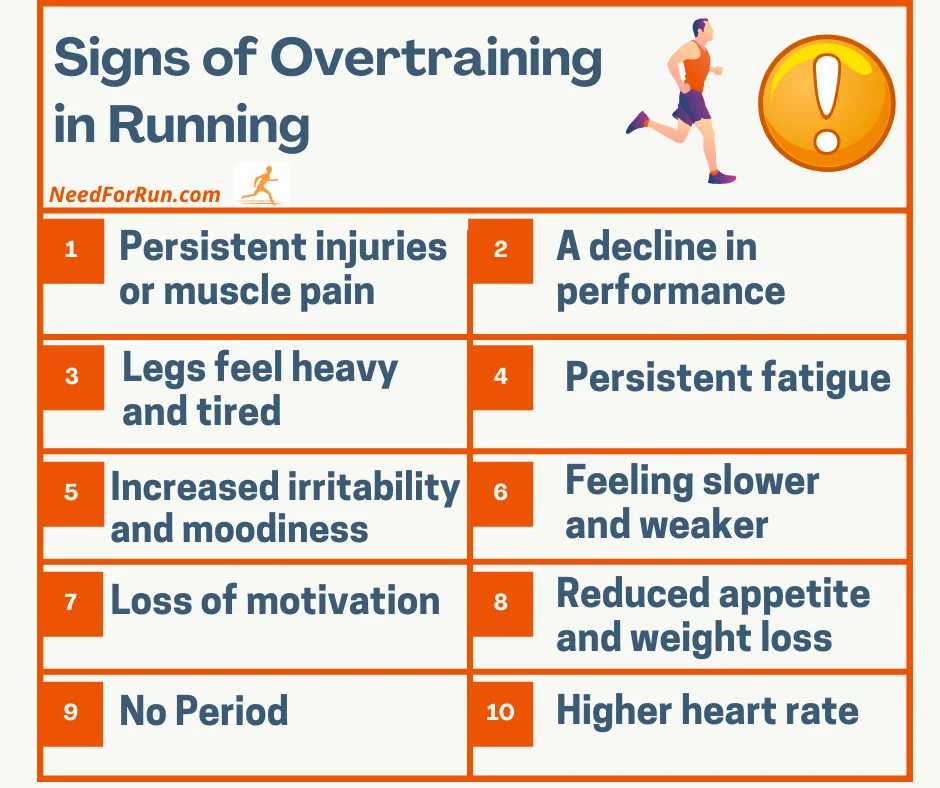
P
Pace
In running, the pace is the average time to complete a mile or a kilometer. It’s used to gauge performance and adjust speed during various runs, like 10K or marathon pace. “Pacing Yourself” means controlling your minute-per-mile pace to maintain energy and avoid exhaustion during long-distance running. Understanding and managing pace is crucial for achieving running goals and optimizing performance.
Pacer
An experienced runner who sets and maintains a specific running pace during a race. Pacers are often used in races to help other runners achieve their desired finish times by maintaining a steady speed throughout the race.
They can provide benefits such as preventing runners from starting too fast, helping maintain an even pace, providing motivation, and assisting in setting personal records.
However, reliance on pacers should be balanced with developing one’s own pacing skills. The use of pacers, sometimes referred to as “rabbits”, has historical significance in the world of running, notably aiding in the achievement of the first four-minute mile.
Plantar Fasciitis
A common foot condition, plantar fasciitis, is characterized by inflammation and pain in the plantar fascia, a thick band of connective tissue along the foot’s bottom. This condition often leads to stabbing pain in the heel or arch, especially in the morning or after rest.
Runners are particularly vulnerable due to repetitive strain, improper mechanics, and tight calf muscles. To treat plantar fasciitis, rest, stretching, ice, and physical therapy are recommended. Wearing proper footwear, using orthotics, and doing strengthening exercises can aid recovery and prevent future issues. Seeking early diagnosis and appropriate management is crucial for a faster recovery. If foot pain persists, seeking medical advice is essential.
Post-run Recovery
Post-run recovery refers to the period following a workout or race when runners allow their bodies to rest, repair, and rejuvenate. This essential phase allows muscles to recover from the stress of running, reduces the risk of injuries, and promotes overall performance improvement.
Key aspects of recovery include adequate hydration, proper nutrition, and stretching to ease muscle tension. Cooling down with light activity like walking helps gradually lower heart rate and promote circulation. Adequate sleep and rest are crucial during this phase, as the body rebuilds and adapts to the training stimulus.
Practicing post-run recovery ensures that runners optimize their training efforts, maintain peak performance, and enjoy the long-term benefits of a healthy and sustainable running routine.
PR (Personal Record) and PB (Personal Best)
In the world of running, PR and PB are two common acronyms used interchangeably to signify a runner’s best performance or fastest time achieved in a specific race distance.
PR stands for Personal Record, and it represents an individual’s best performance in a particular event. It is the fastest time a runner has ever completed a specific distance, such as a 5K, 10K, half-marathon, or marathon. Achieving a new PR is a significant accomplishment and serves as a testament to a runner’s training progress and dedication.
PB, on the other hand, stands for Personal Best, which is the same concept as a PR— the runner’s fastest time in a given distance. In some regions or among certain runners, the term PB is more commonly used to denote this achievement.
PR and PB are important indicators of a runner’s progress and growth. Runners constantly challenge themselves to surpass their records or achieve new personal bests. This drive to reach new milestones fuels their passion for running and serves as a constant reminder of the benefits that come from dedication and perseverance. Whether their goal is to break a PR or a PB, each accomplishment becomes a source of motivation and inspiration as runners strive to achieve new levels of success in their running pursuits.
Pronation
Pronation is a natural movement of the foot that occurs during the running or walking gait cycle. It refers to the inward rolling of the foot, specifically the arch, as it makes contact with the ground. Pronation is a crucial shock-absorbing mechanism, distributing impact forces and helping the foot adapt to different surfaces.
Runners have varying degrees of pronation: neutral, overpronation, or underpronation (supination). Proper shoe selection based on individual pronation type is essential to provide adequate support and prevent injuries. Pronation analysis helps determine the right footwear for runners to maintain proper alignment and promote efficient running mechanics.
Q
Qualifying Time
A qualifying time is a running term that refers to a specific time standard runners must meet to gain entry into certain events or prestigious races. Many marathons, half-marathons, and other competitions set qualifying time requirements, particularly for elite events like the Boston Marathon. To secure a spot on the starting line, runners need to achieve or surpass the designated qualifying time within an approved period before the race.
R
Race Abbreviations:
- DNF: Did not finish. It indicates that the runner started the race but did not complete it successfully, often due to exhaustion or injury.
- DNS: Did not start. This abbreviation means that the runner registered for the race but did not appear at the starting line.
- AG: Age group. It denotes the specific age category in which a runner competes, and awards are often given based on age group rankings.
- BQ: Boston Qualifier. A BQ signifies that a runner achieved a qualifying time to participate in the prestigious Boston Marathon.
- WR: World record. WR indicates the fastest time ever recorded for a particular distance or race in an international competition.
- CR: Course record. CR represents the fastest time ever recorded for a specific race course, setting a new benchmark for future participants.
Recovery Run
A recovery run is a gentle and low-intensity run designed to aid in the recovery process after a challenging workout or race. This type of run is done at a slower pace, allowing the body to promote blood flow to tired muscles and flush out waste products, such as lactic acid.
Recovery runs also help maintain running mechanics and prevent stiffness without putting additional stress on the body. By running at an easy pace, runners can reduce the risk of overtraining and avoid burnout, ensuring they stay on track with their training goals.
These runs are an integral part of a well-balanced training plan, enabling athletes to bounce back faster, prevent injuries, and maintain overall fitness for more productive and successful training sessions in the future.
Rest Day
A rest day is a designated day in a training schedule where runners take a break from intense physical activity. It allows the body time to recover and repair muscles after demanding workouts or races.
Rest days are crucial for preventing overtraining, reducing the risk of injuries, and promoting overall well-being. While rest days involve minimal physical activity, gentle activities like walking or stretching can aid in recovery without putting stress on the body. Rest days are an essential component of a balanced training program, ensuring runners maintain peak performance and sustain long-term progress in their running journey.
Speedwork
Speed work is a type of training aimed at improving running speed and performance. This structured and intentional workout involves alternating high-intensity running, like sprints or intervals, with periods of recovery or rest.
The purpose of speed work is to push the body’s anaerobic capacity, improve cardiovascular fitness, and enable faster running times. By including speed work in their training routine, runners can enhance running economy, increase their ability to maintain faster paces, and ultimately achieve new personal records in races.
Runner’s High
A runner’s high is a euphoric feeling of joy and well-being experienced by some runners during or after a run. It is often associated with long-distance running and is believed to be caused by the release of endorphins, neurotransmitters that act as natural painkillers and mood elevators. This feeling of euphoria and increased well-being can be a significant motivator for runners and is often described as a sense of joy and relaxation during or after a particularly satisfying run.
Runner’s Knee
Runner’s knee, also known as patellofemoral pain syndrome, is a common knee condition among runners. It is characterized by pain and discomfort around the kneecap, often resulting from improper tracking or irritation of the patella (kneecap) against the femur (thigh bone).
The condition can be caused by factors such as overuse, weak thigh muscles, poor running form, or biomechanical issues. Rest, ice, and targeted strengthening exercises can often alleviate the pain and promote recovery. Proper warm-up, cool-down, and gradually increasing training intensity are essential to prevent and manage a runner’s knee. Seeking professional advice can help identify and address underlying causes.
Runner’s Knot (Heel Lock Lacing)
A widely-used lacing technique designed to keep your heel securely in place during runs, preventing foot slippage and reducing the chances of blisters. It creates a tighter fit around the ankle without adding pressure to the rest of the foot, making it ideal for runners with narrow feet or those experiencing heel movement inside their shoes. This technique is part of many runners’ toolkit to tie running shoes more effectively.
Learn how to tie a Runner’s Knot with this guide: Runner’s Knot on wikiHow.
Running Streak
A “Streaker” or “Running Streak” refers to a runner who commits to running at least one mile (or more) every day for an extended and consecutive period.
The streak can last for weeks, months, or even years, with the ultimate goal of maintaining an unbroken daily running routine.
Streakers often prioritize consistency and dedication, making running an integral part of their daily lives, regardless of external circumstances or obstacles. Running streaks can offer various benefits, such as building mental toughness, instilling discipline, and fostering a deep connection with running. However, streakers need to listen to their bodies, take rest days when needed, and avoid pushing through injuries to ensure long-term health and sustainability in their running journey.
S
Shin Splints
Shin splints, medically known as medial tibial stress syndrome, are a common condition causing pain along the shinbone (tibia). It often occurs in runners and athletes due to repetitive stress and overuse of the leg muscles.
The condition is characterized by inflammation and microtears in the muscles and connective tissues around the shin.
Contributing factors may include sudden increases in training intensity, improper footwear, or running on hard surfaces. Rest, ice, and gentle stretching can help manage shin splints. Gradually returning to running and addressing biomechanical issues are essential for a full recovery and preventing further occurrences.
Seeking professional advice can aid in identifying and addressing underlying causes.
Sidelined
Being “sidelined” is a common running term used to describe when a runner is unable to train or race due to injury, illness, or other circumstances. When sidelined, runners must pause their regular running routine to allow the body to rest and heal.
Although this setback can be frustrating, it’s a crucial step to prevent further injury and ensure a safe return to running. During this recovery period, proper rest, rehabilitation, and following medical guidance are key to getting back on track.
Skyrunning
Skyrunning is a form of high-altitude mountain running that takes place in rugged and technical terrains, usually at elevations above 2,000 meters (6,562 feet). The sport combines elements of trail running, mountain climbing, and scrambling, challenging participants with steep ascents, rocky descents, and exposed ridgelines.
Skyrunning races can range from short and intense vertical kilometer (VK) events to ultra-distance races that cover significant elevation gain over varying distances. The discipline emphasizes the connection between athletes and the mountains, pushing the boundaries of human endurance and offering breathtaking vistas in some of the world’s most challenging and beautiful landscapes.
Splits
In running, “splits” refer to the time it takes to complete a specific distance, such as one kilometer or one mile, during a race or training run.
By recording and analyzing splits, runners can track their pace and performance at various points throughout the race. Splits provide valuable insights into pacing strategies, allowing runners to make adjustments to achieve their desired race goals.
They are often displayed on a watch or recorded by race officials at designated markers along the course, giving runners real-time feedback on their progress and helping them stay on target during a race.
Strength Training
Strength training is a form of exercise that focuses on increasing muscular strength, power, and endurance. It involves performing resistance exercises, such as weightlifting or bodyweight exercises, to target specific muscle groups. The primary goal of strength training is to challenge and overload the muscles, leading to adaptations that make them stronger and more resilient.
By incorporating strength training, runners can improve running economy, prevent injuries, and enhance overall performance. Stronger muscles provide more significant support to the joints, reducing the risk of common running-related injuries. Strength training helps runners develop better running form and posture, leading to more efficient running mechanics and reduced energy expenditure during each stride. Increased muscle strength can also lead to improved running speed and power, which are vital for sprinting, hill running, and race finishes.
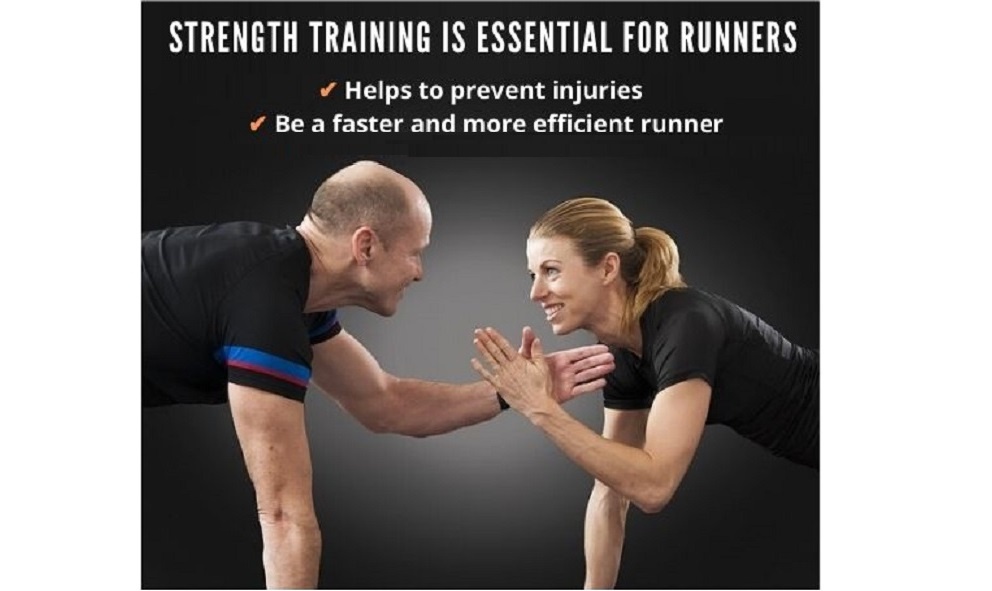
Stride Length
Stride length refers to the distance covered by a single step or stride while running.
It is an essential aspect of running biomechanics and can vary between individuals based on factors such as height, running speed, and running technique.
Stride length, along with stride frequency (number of steps per minute), directly influences a runner’s pace and efficiency. Striking the right balance between stride length and stride frequency can help optimize running performance and reduce the risk of injuries.
Coaches often work with runners to fine-tune their stride length and running mechanics for improved overall running efficiency.
T
Tapering
Tapering, or the taper phase, is an important part of a runner’s training before a big race or event. During tapering, the runner slowly decreases the amount and intensity of their training to give their body time to rest and recharge before the race.
Tapering usually takes place in the last one to three weeks before the event and helps avoid excessive training while making sure the runner is in top shape on race day. A well-done taper can result in better performance and fresher legs for the important day.
Tempo Run
A tempo run is a training workout with a comfortably challenging pace near the lactate threshold. It improves endurance and running performance. Tempo runs are shorter than long-distance runs and faster than easy runs. Regular tempo runs enhance race performance and running economy. Proper warm-up and recovery are essential for maximum benefits.
Threshold Run
A threshold run, also known as a tempo run, involves running comfortably hard at a pace just below breathlessness, around 80-90% of maximum effort. This workout improves lactic acid tolerance, delays fatigue, and enhances speed and endurance. Incorporating threshold runs into training plans prepares runners for races and boosts cardiovascular fitness and mental resilience. Proper warm-up and recovery are essential for optimizing training benefits and reducing the risk of injury.
Trail Running
Trail running is a form of running that takes place on natural terrain, such as dirt paths, mountain trails, or forest trails, as opposed to running on paved roads or tracks. It involves navigating through uneven surfaces, challenging inclines, and varying terrains.
Trail running provides a unique experience that allows runners to connect with nature, enjoy scenic views, and challenge themselves physically and mentally. It requires adaptability, balance, and a heightened sense of focus due to the natural obstacles and changing conditions. Many people gravitate towards trail running as a way to escape the urban environment, immerse themselves in nature, and experience the physical and mental benefits of running in a more adventurous setting.
U
Ultra-Marathon
An ultra-marathon is any running race longer than the traditional marathon distance of 42.195 kilometers (26.219 miles). These races can range from 50 kilometers (31 miles) to hundreds of kilometers or even multi-day events.
Ultra-marathons are known for their challenging terrains, such as trails, mountains, or deserts, and require immense mental and physical endurance. Participating in an ultramarathon is a test of a runner’s grit, determination, and ability to manage their pace and energy over extended distances.
V
VO2 Max
VO2 Max stands for Maximum Volume of Oxygen that can be transferred to the bloodstream. It measures the highest possible amount of oxygen an individual can utilize during intense physical exercise.
VO2 Max is considered an indicator of cardiovascular endurance and aerobic fitness.
For runners, VO2 Max is a crucial factor that affects their performance in races of different distances. Higher VO2 Max values suggest a greater capacity for oxygen uptake and utilization, leading to improved running performance at faster paces. Endurance training, such as interval workouts and long runs, can help improve VO2 Max and enhance overall running capabilities.
W
Warm-up
It is essential to properly warm up before running. Regardless of whether you are running a marathon or just jogging around the neighborhood, warming up is necessary to prevent injuries and improve your running performance. If your muscles are cold and your joints are stiff, intense training can put your muscles at risk and increase the chances of unnecessary injuries.
A proper warm-up should include the following three steps:
1) Dynamic warm-up to lubricate the joints
2) Technique exercises
3) Walking/Easy running
X
X-Training (Cross-Training)
X-training, also known as cross-training, refers to incorporating alternative forms of exercise and physical activities into a runner’s training routine. This can include activities like cycling, swimming, strength training, yoga, or any other aerobic and non-aerobic exercises.
Cross-training helps prevent overuse injuries, promotes overall fitness and muscular balance, and provides active recovery for the primary running muscles. By diversifying workouts, runners can enhance their performance while reducing the risk of burnout.
Y
Yasso 800
Yasso 800s is a special type of workout named after Bart Yasso, a famous runner and writer. In this workout, you run 800 meters (which is half a mile) at a faster speed and then take a slow jog for the same amount of time to recover before doing it again.
For example, if you run the 800 meters in 3 minutes, you would jog slowly for 3 minutes before doing the next repetition. The Yasso 800s workout is often used to predict how well someone might do in a marathon. It is thought that the time it takes to complete the 800-meter repetitions can give you an idea of how long it might take you to finish a marathon in hours and minutes. For example, if you can consistently run the 800 meters in 3 minutes and 30 seconds, you might be able to finish a marathon in around 3 hours and 30 minutes. This workout is challenging but popular among runners because it helps them gauge their fitness for a marathon and set goals for their race pace.
Z
Zone Training
Zone training, also known as heart rate training, is a method of structuring workouts based on specific heart rate zones to achieve different training objectives.
These heart rate zones are determined by a percentage of a runner’s maximum heart rate and can be used to target different aspects of fitness, such as endurance, aerobic capacity, and recovery.
For instance, Zone 2 might focus on aerobic development and fat burning, while Zone 4 targets lactate threshold and anaerobic capacity.
By training in specific heart rate zones, runners can optimize their workouts, prevent overtraining, and better understand their body’s response to different levels of effort. Zone training is particularly valuable for runners looking to tailor their training to individual fitness levels and performance goals.
